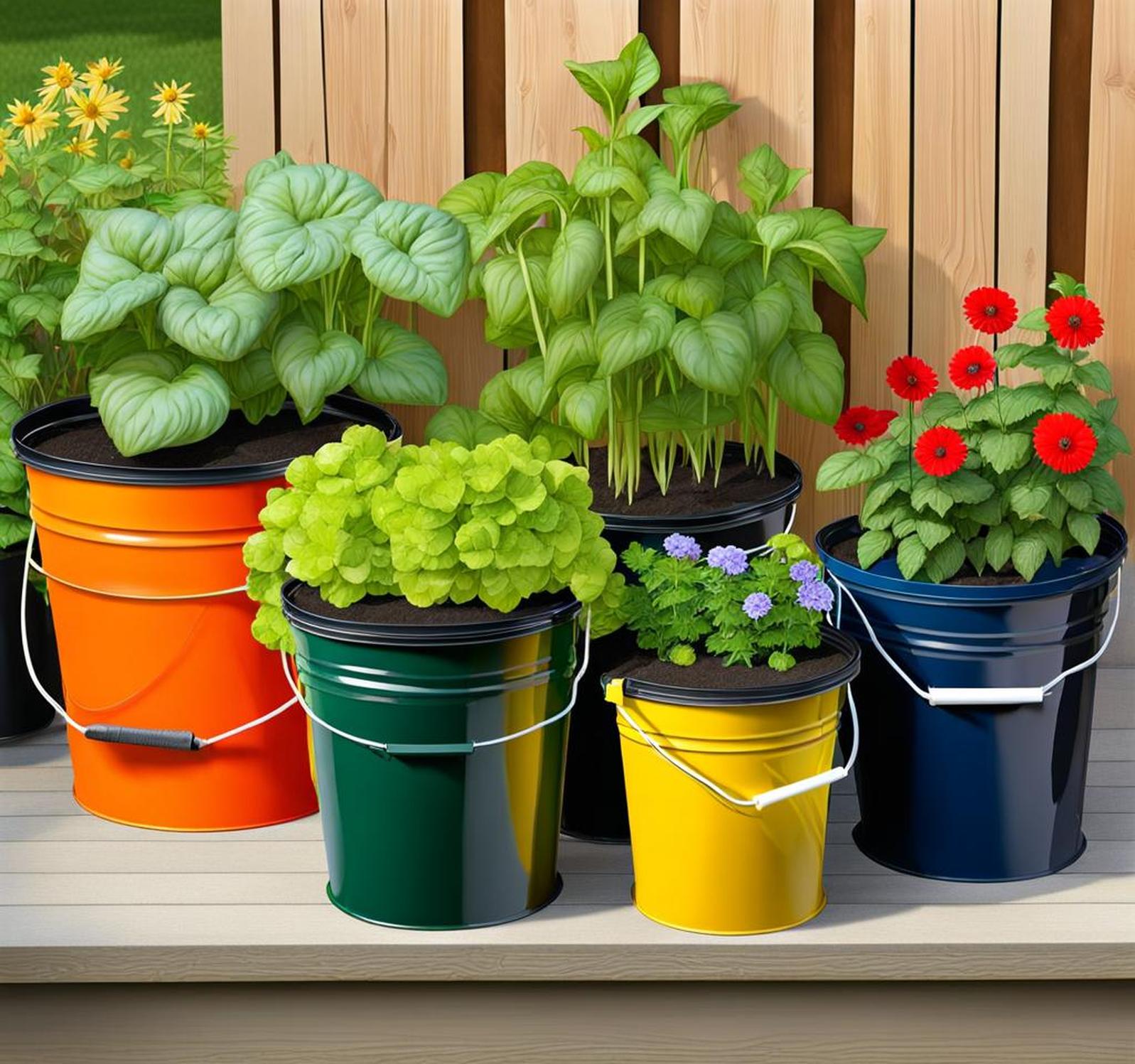Having a lush vegetable garden is a dream for many homeowners but often tricky to do without ample outdoor space. If you have a small yard, patio, balcony or deck, don’t despair! You can easily grow a bountiful harvest of veggies, herbs and flowers in 5 gallon buckets.
5 gallon bucket gardening is a great solution for those with limited room for in-ground beds. The compact buckets allow you to grow plants in vertical stacks, maximizing production in a tiny footprint. This simple method yields bumper crops of tomatoes, peppers, leafy greens, carrots, radishes and more.
Why Choose 5 Gallon Buckets?
Here are some key benefits of using 5 gallon buckets for container vegetable gardening:
- Ideal size for healthy root growth
- Lightweight enough to move around
- Inexpensive and easy to find
- Stackable for vertical gardening
- Provide control over soil quality
- Elevate plants away from pests
- Water and fertilize plants easily
With a bit of preparation, these humble plastic buckets become the perfect vessel for cultivating your own urban garden!

Planning Your 5 Gallon Bucket Garden
Choosing a Location
When figuring out where to set up your bucket garden, there are a few key factors to consider:
- Sunlight: Most vegetables need at least 6 hours of direct sunlight daily.
- Water access: Nearby hose or spigot simplifies watering.
- Convenience: Place buckets close to your back door for easy care.
- Visibility: Choose a visible spot to deter animal pests from nibbling.
Selecting Vegetables to Grow
Nearly any vegetable can thrive in a 5 gallon bucket, but some of the easiest options for beginners are:
| Vegetable | Notes |
|---|---|
| Cherry tomatoes | Compact size, prolific harvests |
| Bush beans | Grow well upright without trellising |
| Lettuces | Shallow roots, fast-growing |
| Radishes | Quick to mature, great for kids |
| Peppers | Do well in containers, big yields |
| Herbs | Small roots, essential for cooking |
How Many Plants per Bucket?
As a general rule, plant just one main vegetable or herb per 5 gallon bucket. You can add flowering companion plants like marigolds around the edges if desired. Go with dwarf or bush varieties that will stay compact and suit the container size.
Preparing Your 5 Gallon Buckets
With a few simple modifications, used 5 gallon buckets can be transformed into versatile garden planters:
- Clean bucket thoroughly with soap and water
- Use a power drill to make 5-10 drainage holes in the bottom
- Cover holes with small mesh screen to block soil but allow water flow
- Paint or decorate buckets as desired (optional)
For a quick DIY bucket stand, use scrap lumber screwed together into an A-frame shape. Elevating your buckets makes watering easier and improves drainage.
Filling Buckets with Potting Mix
Quality potting soil is key to any container garden. Look for mixes formulated specifically for vegetables and avoid regular garden soil which can compact too much. Fill bucket to about 2 inches below the rim to leave room for watering.
Mix in 1-2 inches of compost or organic fertilizer to enrich the potting mix before planting. Slow release organic fertilizers provide a steady supply of nutrients to your plants over time.
Planting Your 5 Gallon Bucket Garden
You can either start plants from seed directly in the containers or use transplants purchased from a nursery. Seeds take longer but allow you to grow a broader variety of vegetables.
Follow seed packet guidelines for planting depth. Gently firm soil after planting but avoid compacting it too much. Keep seeds consistently moist until they emerge.
When transplanting seedlings, carefully separate the roots and plant at the same level they were growing before. Water them well after planting to reduce transplant shock.
Caring for Your Bucket Garden
Watering
As a rule, container plants need more frequent watering than in-ground gardens. Check soil moisture daily and water whenever the top few inches become dry. Aim for deep soakings rather than frequent sprinkles.
Consider setting up drip irrigation lines with a timer to automate watering. This prevents drought stress on hot days.
Fertilizing
In addition to the nutrients mixed into the initial potting soil, you’ll need to fertilize your bucket garden regularly. Every 2-4 weeks, use an organic vegetable fertilizer according to label directions.
Compost and compost tea also provide excellent nutrition for container plants. Work them into the soil surface around each plant.
Controlling Pests
Luckily, pests have a harder time reaching elevated bucket gardens. But you may still see common culprits like aphids, snails and caterpillars. Remove by hand or use organic sprays as needed.
Planting marigolds, basil and other companion plants repels certain pests. They lure beneficial insects too.
Harvesting Your Veggies
One of the joys of bucket gardening is walking out your door to pick fresh ingredients for meals. Harvest lettuce, herbs, tomatoes and more once they reach maturity. Use pruning shears for cleaner cuts.
Certain veggies like beans, tomatoes and peppers produce steadily over weeks or months. Follow recommendations for ongoing harvesting without harming the plant.
A bit of seasonal care will keep your container garden thriving:
- Replenish potting mix each spring as nutrients deplete.
- Add compost and organic fertilizer before each planting.
- Rotate plant locations to disrupt soil-borne diseases.
- Repair any cracks or leaks in buckets.
- Store empty buckets out of weather in winter.
Following these simple 5 gallon bucket gardening tips, you’ll be harvesting bumper crops from your patio, balcony or doorstep in no time. Get growing!
